Maps of the World
selections from
“The History of our World: Major Events, Geographies,
Biographies, Arcanum and Theologies”
Compiled by the scholars and custodians
of the Eternal Library

“Map of Kir” recreated from the notes and drawings of Zhandu, Elder Bookmaster of the Eternal Library, p0884
Known Countries and Cultures
The World of Kir comprises seven major nations, each with a deep history and a cornucopia of cultures, languages, and people. Here is a brief overview of those regions:

There is no state or person whose life is not impacted by the Verushan Empire. Founded by the ambitious Emperor Lord Veru I of the Mahavaar family, the five states that comprise The Empire are the dominion of powerful families who politically scheme against one another for control of The Roaring Throne and all that ruling the empire entails. The Empire dominates global politics and economics and it’s diplomatic and administrative core, the Vissi, have a well-earned reputation for always getting the best deal, whether the other side likes it or not. For the people living within its complex weave of states who are subject to its rule, they either see The Empire as the greatest place to live on Kir worthy of its reputation or boot on the neck of all oppression, and dream of the day their homes are once again free of it’s tyranny.
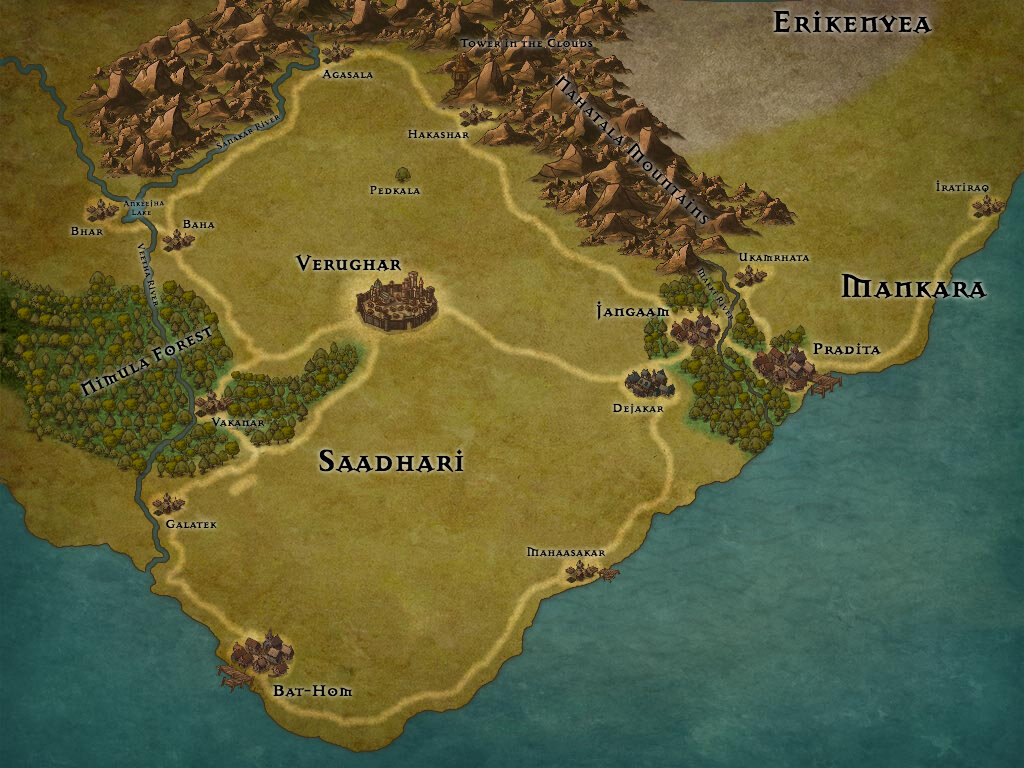
The seat of power of the Verushan Empire, Saadhari is a state of extreme wealth and extreme poverty, many resources, and one of the most impactful lands in terms of world events. Saadhari is one of the major states of Kir, and much of the fate of the world is decided from its capital city Verughar, whether the other nations agree or not.
Mankara is geographically small but significant state in the Empire. Pradita, the capital of Mankara, is the home of the Empire’s school for spies and its infamous and secretive arcane cult, The Order of Five Knives.
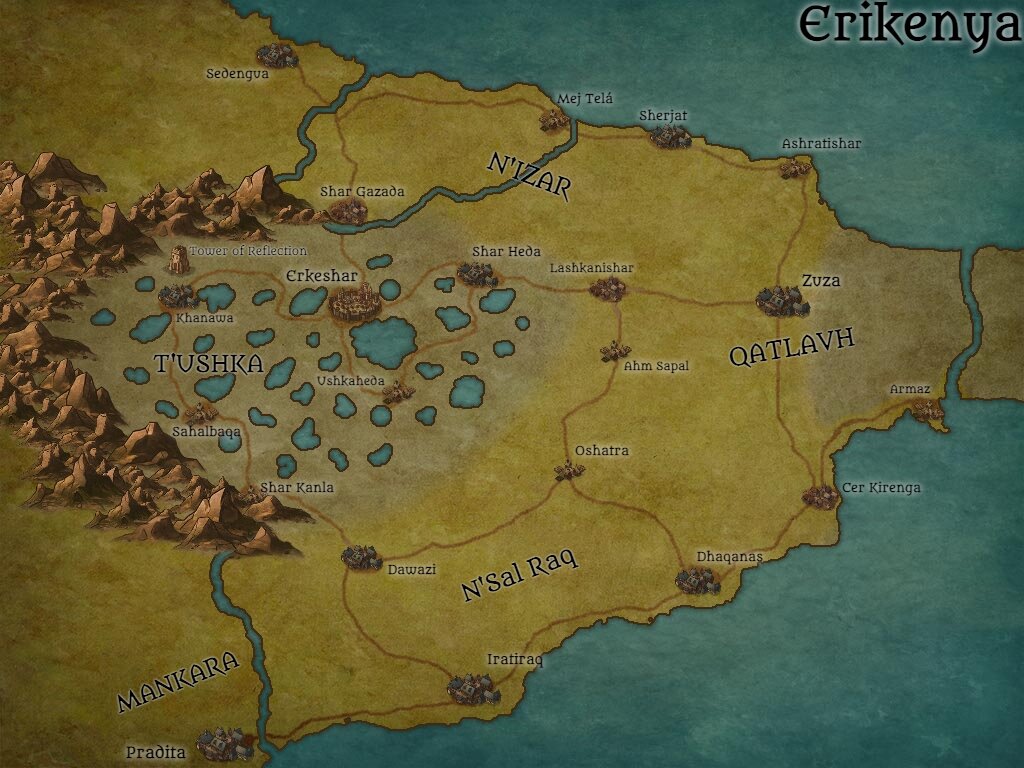
The once-independent state of Erikenyea celebrates a rich history and stong, traditional culture. Erikenyea is the birthplace of the Avosi religion, the state religion of the Verushan Empire, and well-known and active arcane cult known as The Mirror. Erikenyea’s capital city of Erkishar is located deep in the Tu’shkha (or “One Thousand Tears”) and is home of the great castle of the Erikenyean rulers, known as the Sahals, and their seat of power, the Living Throne.
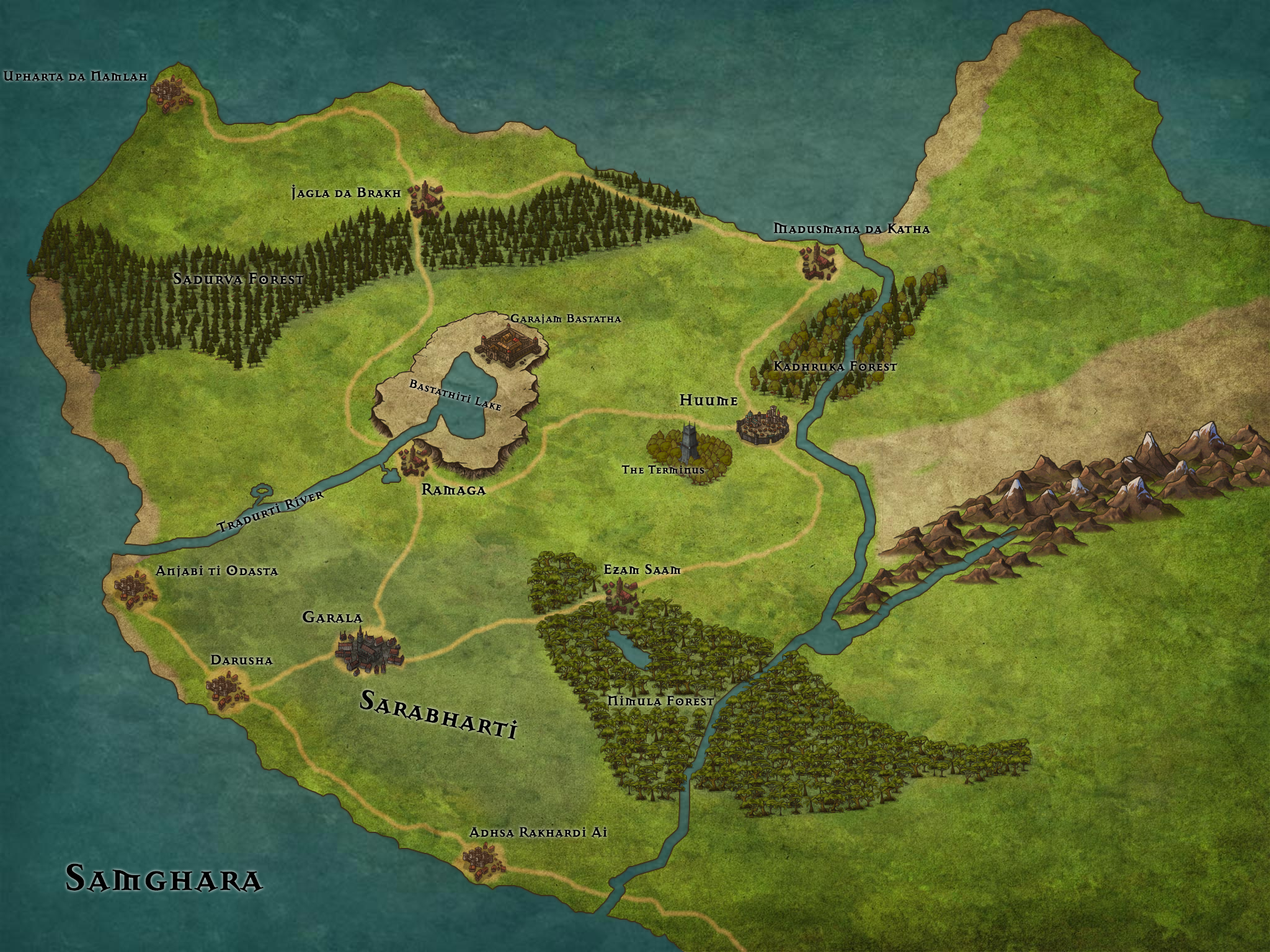
The people of Samghara pride themselves on their veneration of education, philosophy, and medical and scientific advancements. Within the borders of Samghara, the wealthy and the working classes alike spend hours contemplating the mysteries of the universe both within and outside of the body. Medicine, science, and thought flow from the massive school, medical complex, and seat of governance known as the Garajam (or “The Palace of Healing”). Samghara is also known for the strong defense of its caste system and a strong rivalry with its eastern neighbor, Rish’ea.
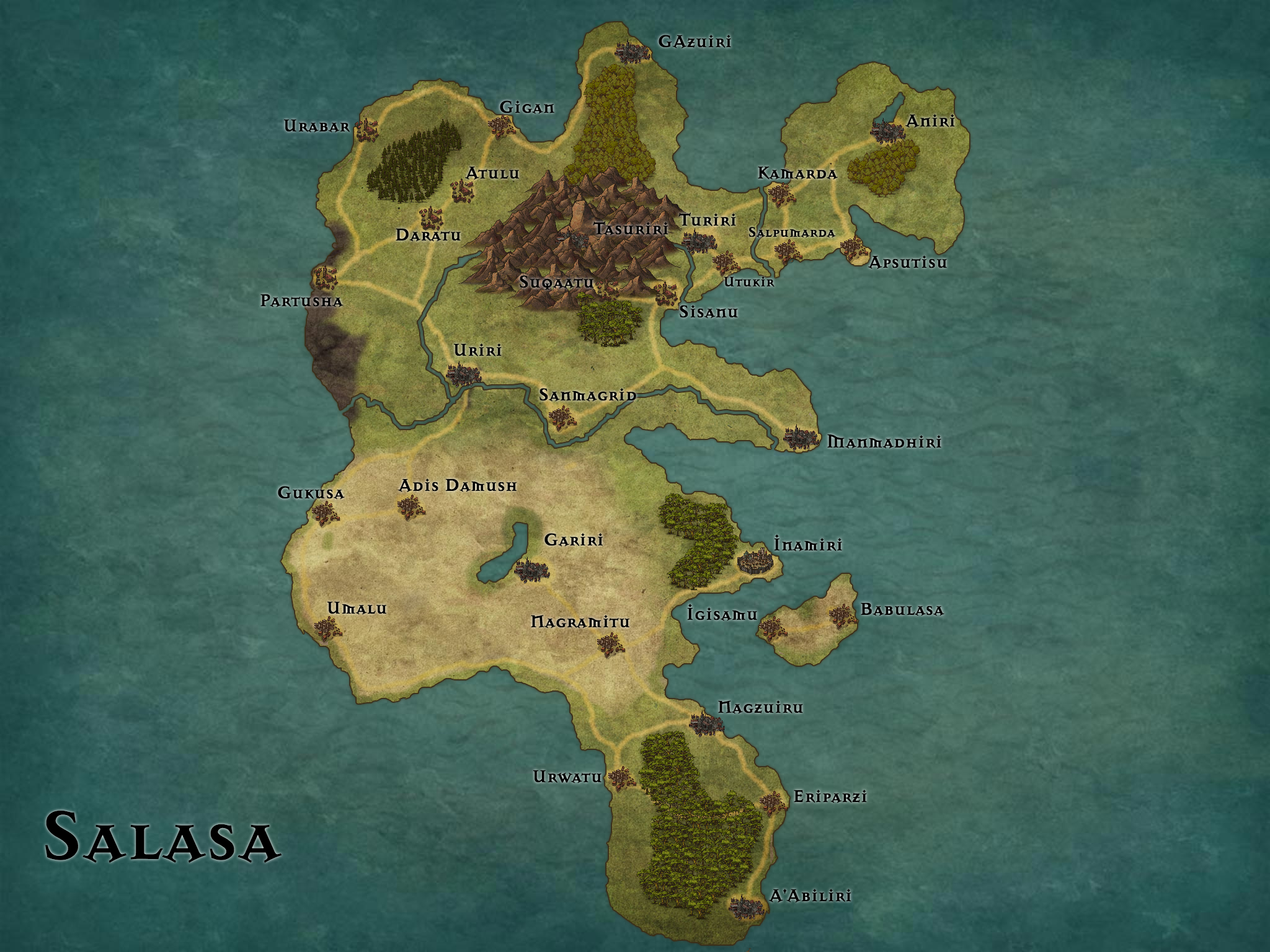
The history Salasa is defined by the interests, lineage, and worship of the Umabum (or “Noble Beings”), long-lived mythological creatures of great supernatural powers who existed in antiquity. Salasans celebrate a devotedly religious culture, and the Salasan Empire maintains one of the strongest governments and economies in the world, with an extensive and vibrant internal economy.
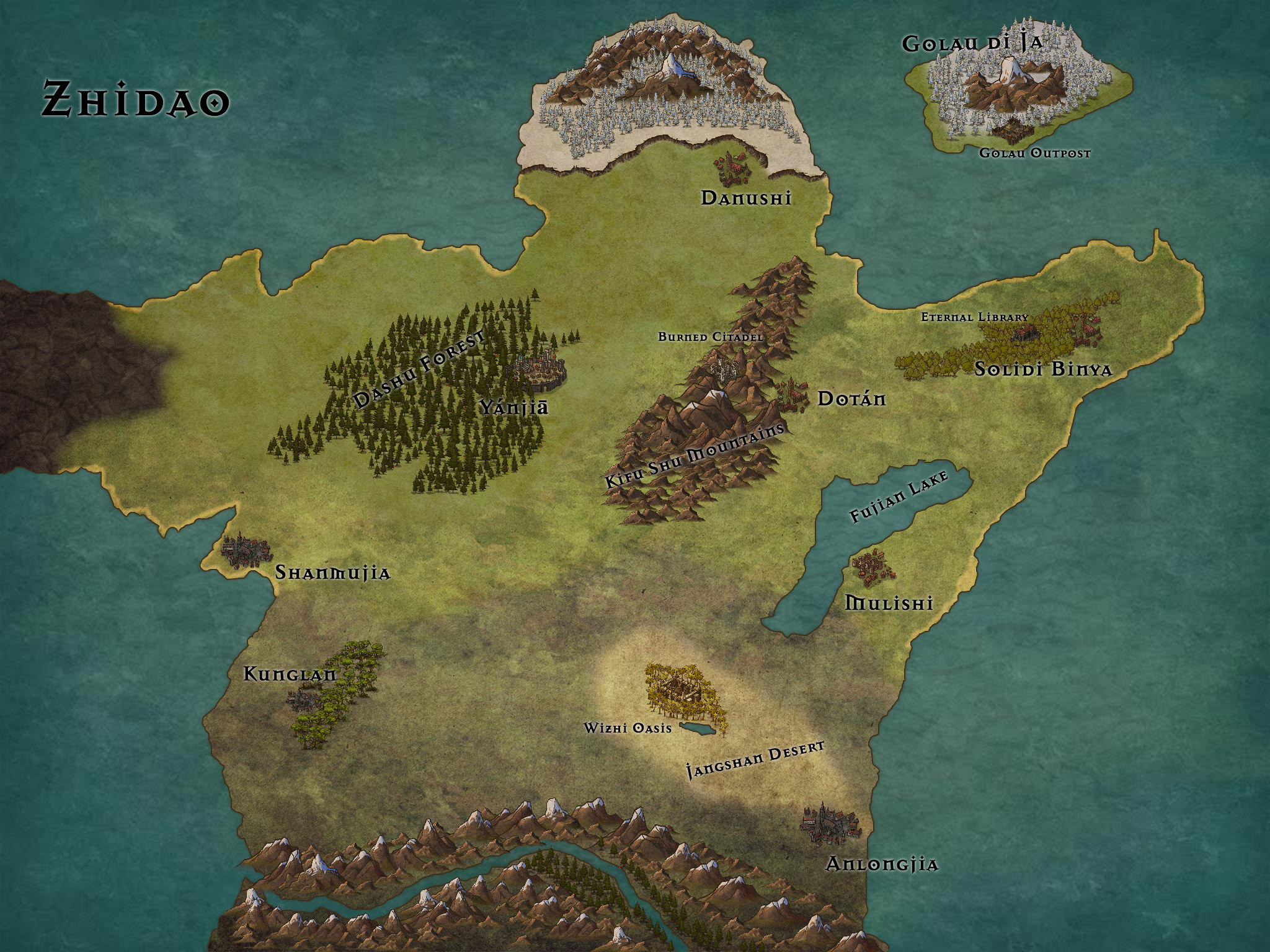
Among its many contributions to the world, Zhidao is known for being the lands where the Arcane Science was “discovered” and honed and the home of the Dasholin Scholars of the Eternal Library, the stewards of the world’s knowledge, as well as the oldest arcane cult in the world, the Children of the Flame. The people of Zhidao celebrate the region’s connection to the arcane, and many festivals and presentations happen throughout the year, especially in the “City of Magic”, Shanmujia. Zhidao’s arcane connections extend to its flora and fauna, and this land has the distinction of being richest in Kir in arcane biodiversity.
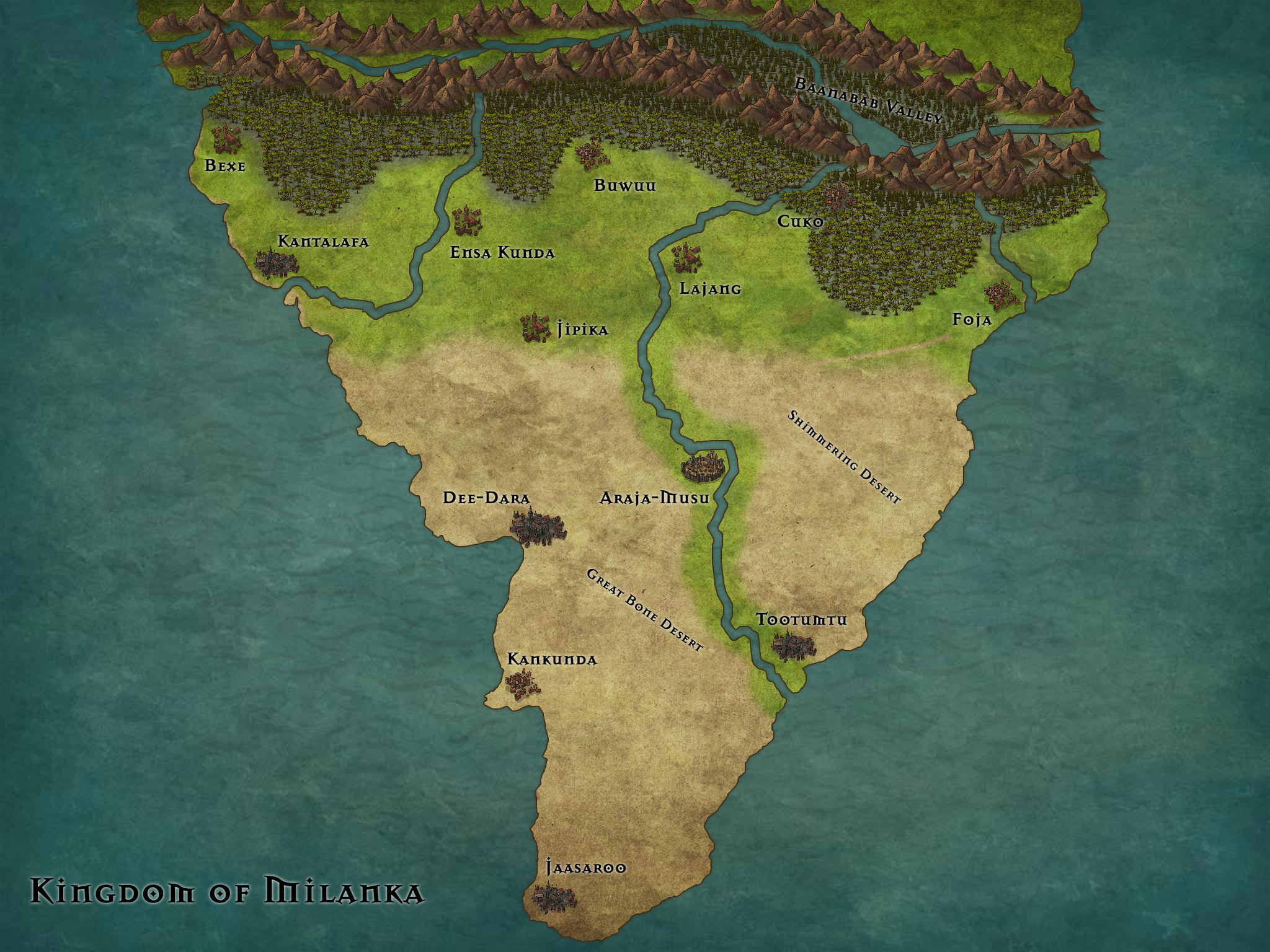
The Republic of Milanka is unique in Kir for being ruled by an assembly of anointed officials from cities, towns, and villages throughout the region. Though this bureaucratic system can result in complex political rivalries, Milanka is a mostly peaceful nation with a robust national economy and military. It is well known for its passionate celebration of its unified monoculture and mysterious arcane cult, the Students of Essai.
This was not always the case. Classical Milanka was dominated by strong and authoritarian men. Violent gladiatorial sports and horrific battles persisted both inside and outside the arena. After a brutal, eight-year revolution led in large part by gladiators themselves, and a subsequent dark age that lasted nearly five hundred years, Milanka eventually emerged from its bloody past as a strong people with a renewed vitality and unified identity. Symbolically, this emergence is celebrated through the repurposing of the gladiatorial arenas into large cultural centers where music, storytelling, and other artistic performances take the place. The most popular of these events are the large orchestral, spectacular, choral pageants, known as fanas.
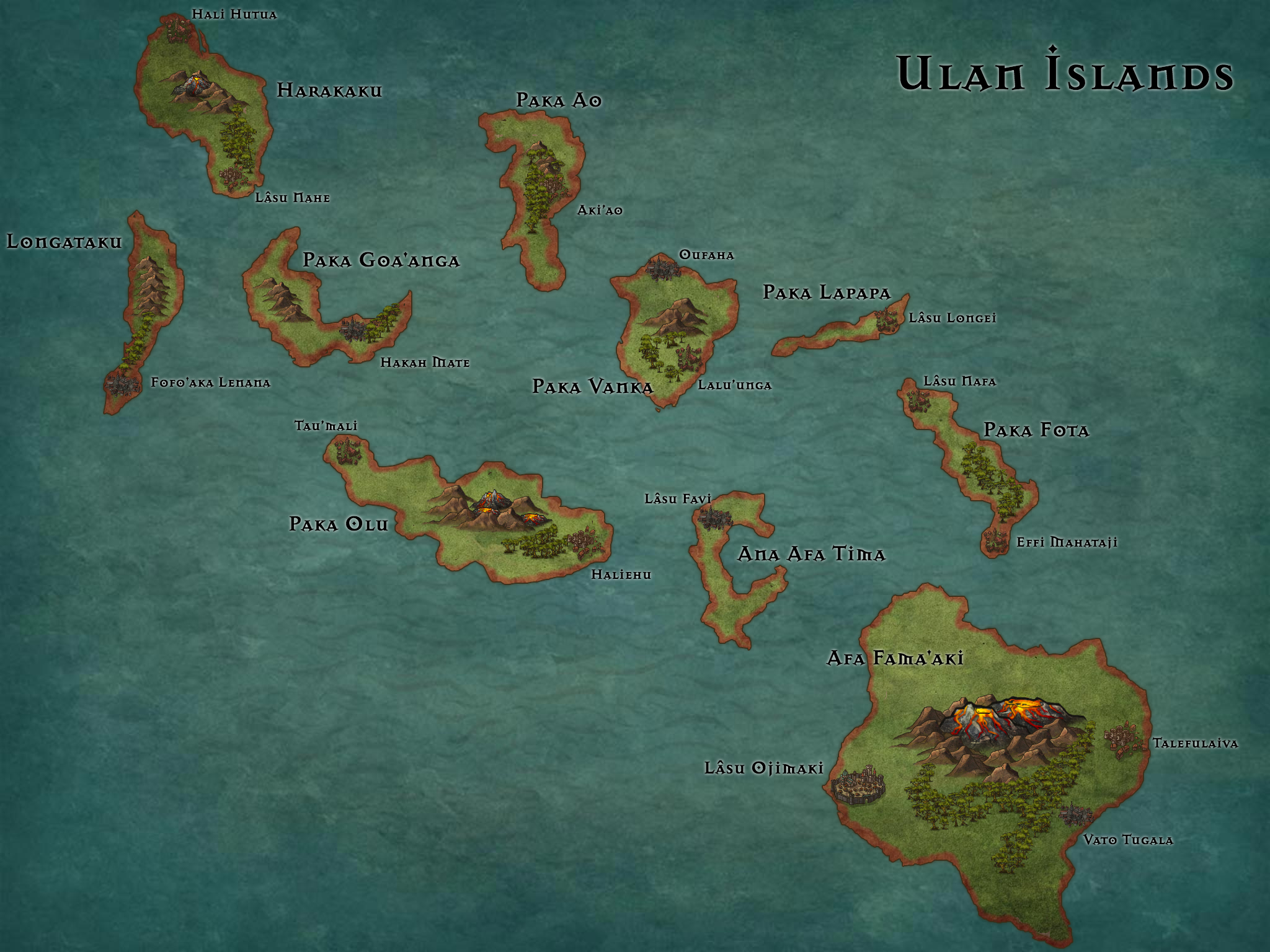
In the middle of the Southern Ocean are the Ulan Islands, known for their red sand beaches, dense forest vegetation, and the wise and resourceful UIani people. Expert sailors and master traders, the Ulani travel the world in large sailing vessels, guided by a spirit of adventure. There are few ports in Kir that have not met one of their ships, and as such, the Ulan Islands have the distinction of celebrating a neutrality rarely seen in this world, and many major diplomatic events have taken place here.
The Ulan celebrate and are protected in turn by Uli Ungo, their whale god and the Lord of the Ocean, and the island nation’s arcane cult and living defenders of the ocean, the Kehanua (or “Wave Riders”).
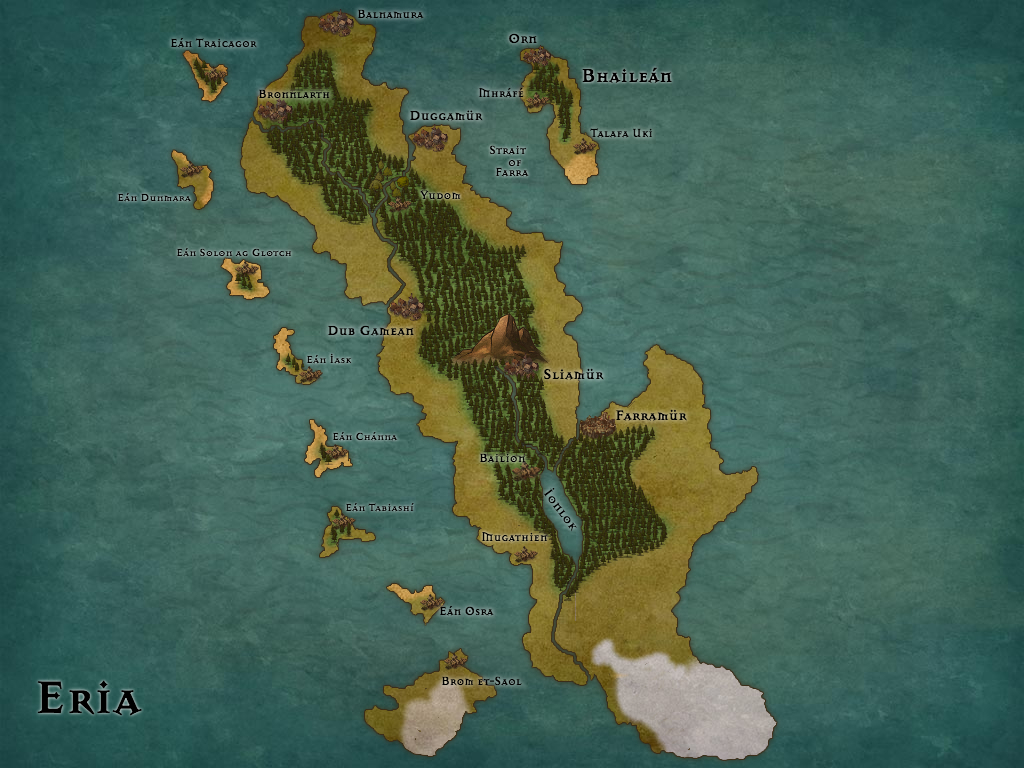
Also known as “The Land of the Shadowed Forest”, Ería is widely considered the most barbaric and turbulent society in the world. The history of Ería is marked by internal conflicts and clan warfare. There are few outsiders that travel to the shores of Ería, but those who manage to survive return with stories of a country as chaotic and violent as it is filled with great natural beauty and gorgeous music.
The people of Ería are the most fair-skinned in Kir, and are often very tall. Traditional Erían society centers around the larger family units of clans. The total number of clans in Ería is unknown, though it is generally understood that forty-five significant clans have made a mark in the history of the nation.
Ería also has the distinction of being the last nation in the world to practice slavery. The Eríans’ import of Hanaq people to their nation to serve as slaves is a controversial practice that has made them the pariahs of the larger world. The liberation of the Hanaqi people from the barbaric institution is the subject of many national treaties and diplomacy, to the point that few nations are willing to trade directly (or openly) with Ería and its people.
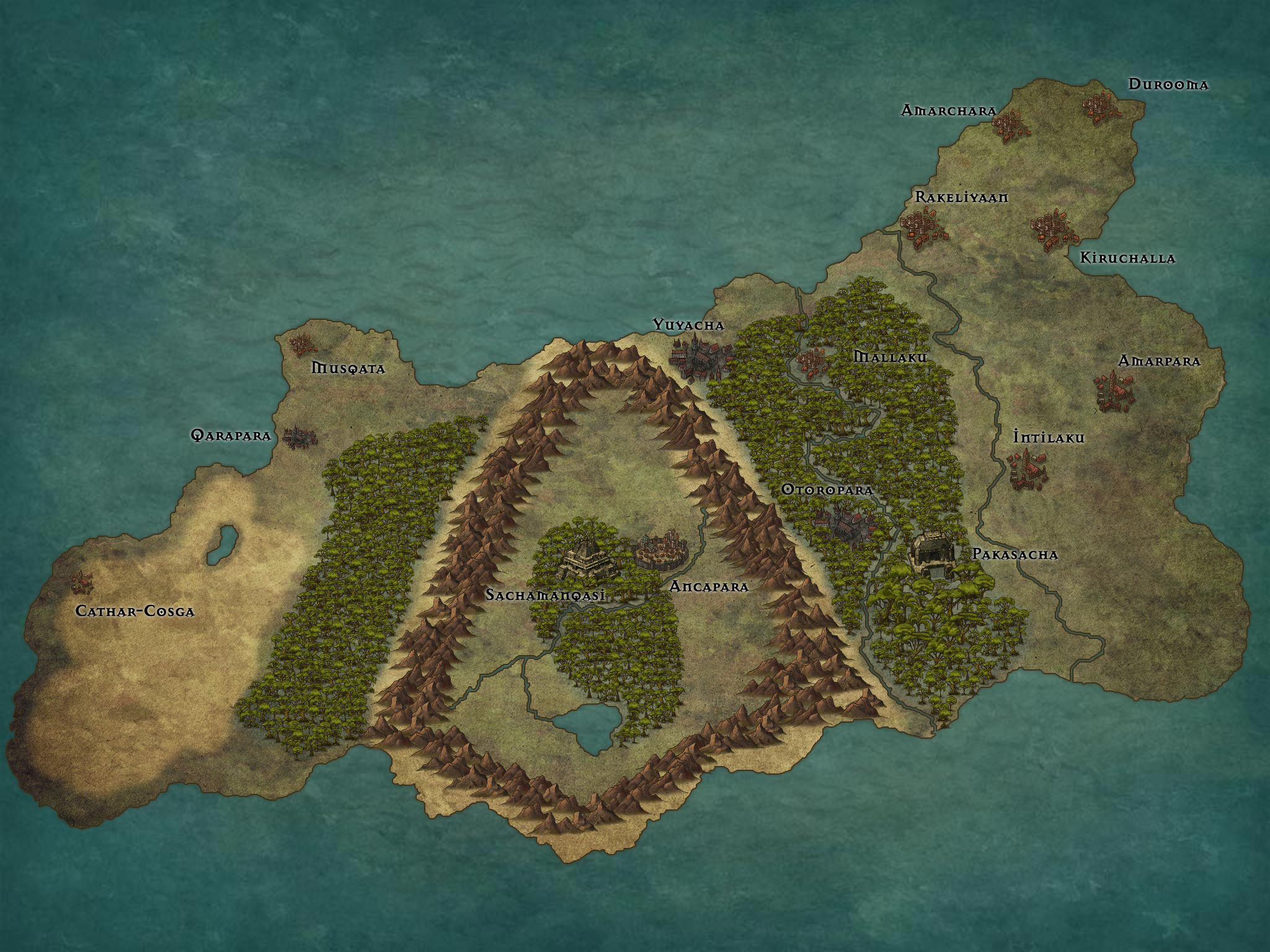
Like many of the lands in the Southern Sea, Hanaq was mostly ignored by the “civilized” nations of the North until Hanaq’s vast wealth was discovered and the many gemstones, precious metals, and other treasures began to filter out of it. From that time, the history of Hanaq has been inescapably tied to a violent and oppressive history of invasion, settler colonialism, and, especially through the Erían conquest of the western kingdom of Qara, the controversial export of Hanaq’s most precious resource, the Hanaqi people.
Through all of this history the Hanaqi have kept their culture and communities alive, continually fighting external powers, and retaining a vibrant culture through their animistic religious practices and love of music, dance, and family.
